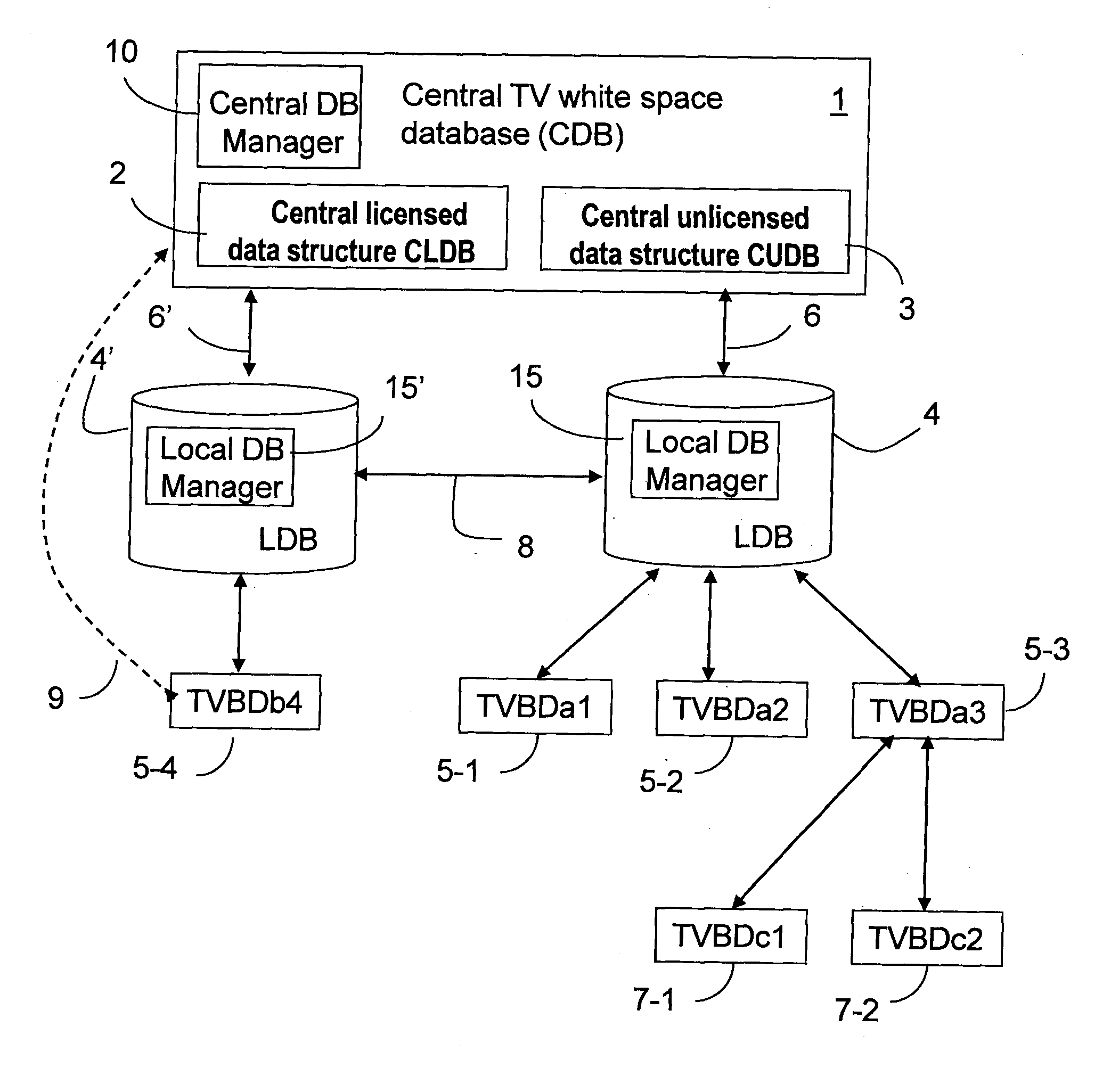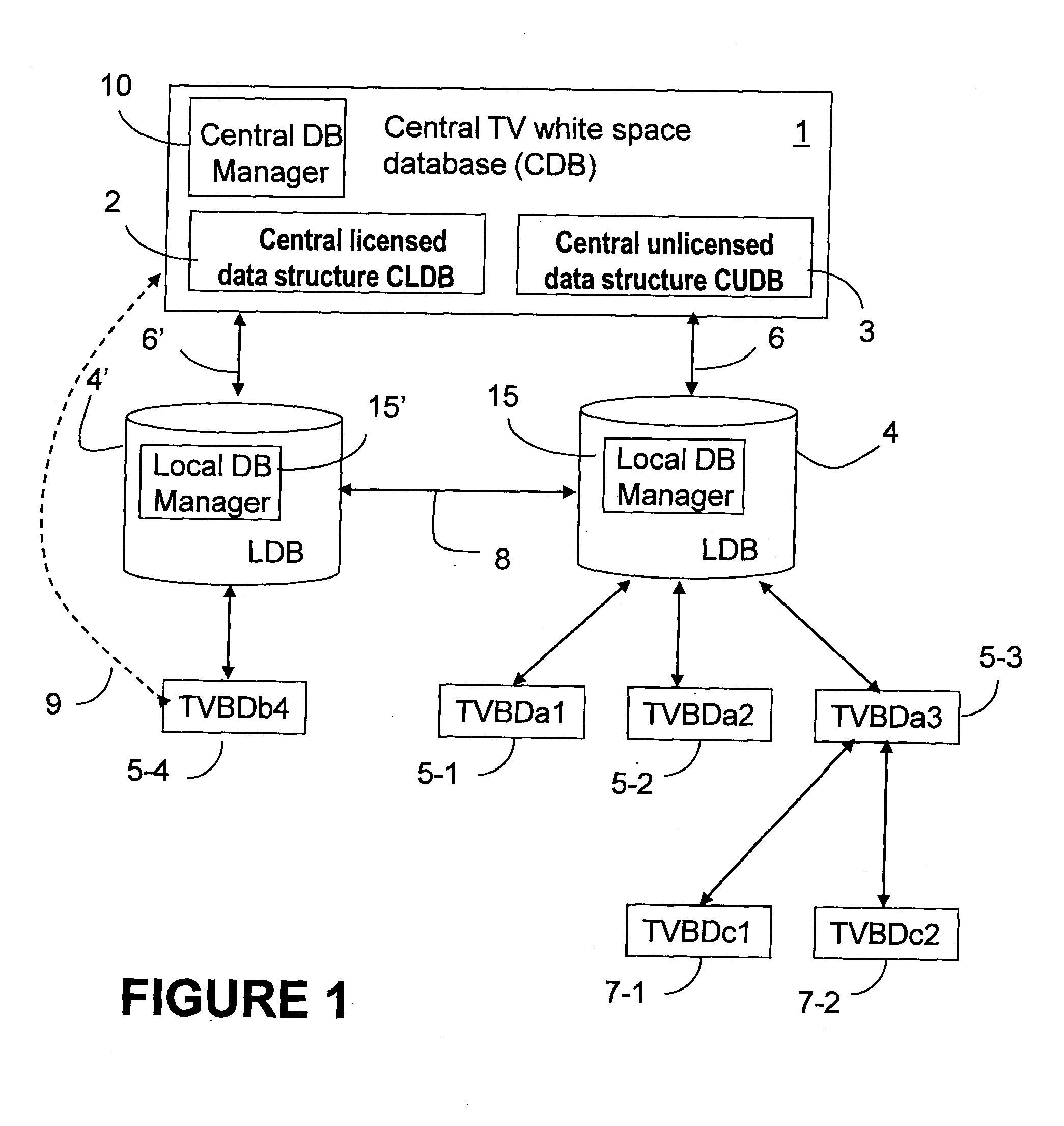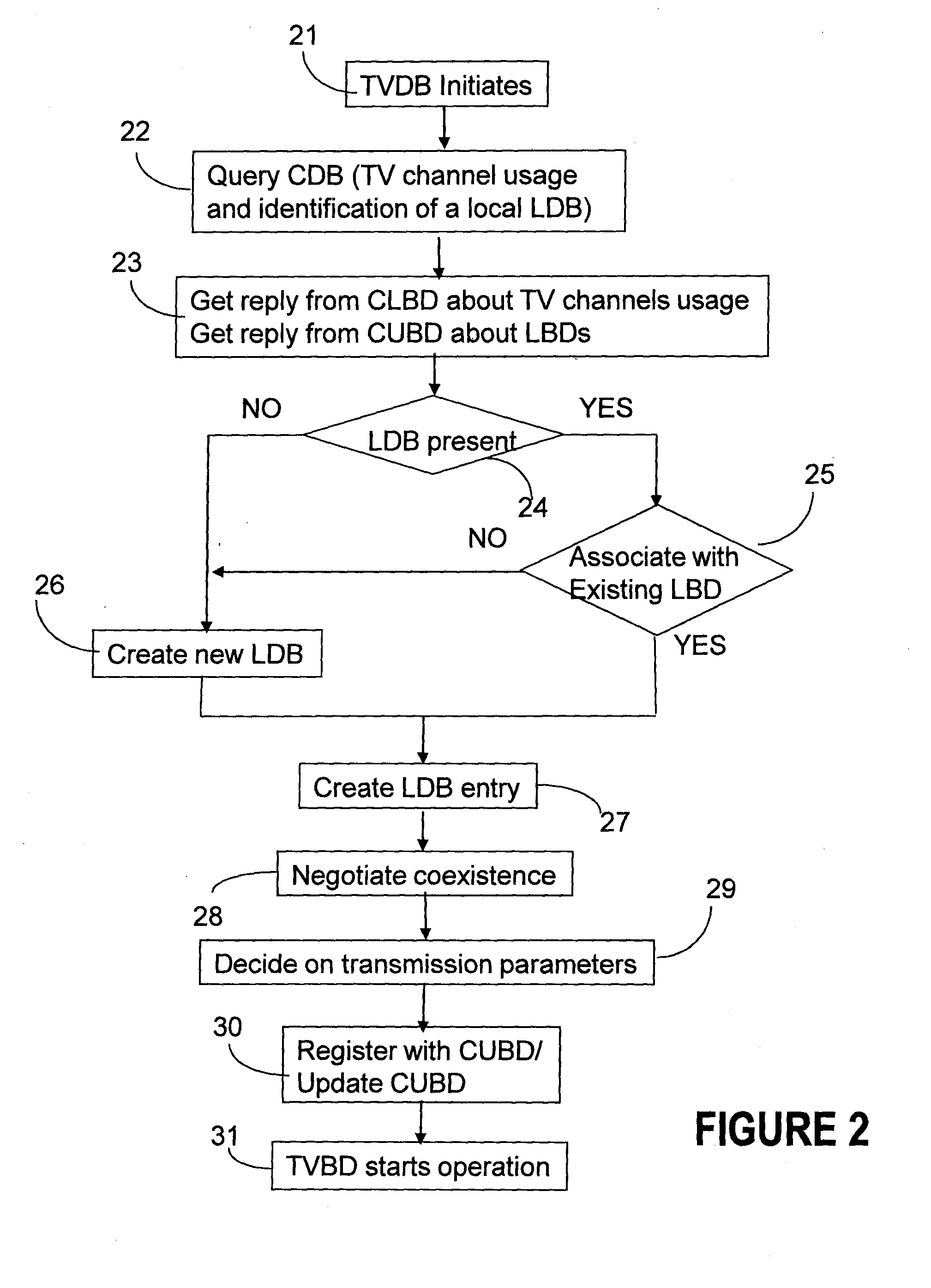TV white space devices using structured databases
a structured database and white space technology, applied in the direction of instruments, wireless communication, assess restrictions, etc., can solve the problems of not being able to agree on how many entities, the spectral sensing alone is not enough to enable unlicensed devices, etc., to enhance the protection of licensed users
- Summary
- Abstract
- Description
- Claims
- Application Information
AI Technical Summary
Benefits of technology
Problems solved by technology
Method used
Image
Examples
Embodiment Construction
[0037]In the following description, one or more aspects utilize a two-level database structure for enabling management and control of available wireless spectrum resources in the networks using TVBDs. Accordingly, the communication spectrum is allocated between these devices while ensuring that use of this spectrum does not affect in any way operation of the licensed services such as TV broadcast and wireless microphone systems. Although the various aspects and embodiments herein described refer to various wireless implementations, it will however be appreciated that these methods and systems are also applicable to wireline transmission.
[0038]According to the various embodiments described herein, the generally accepted definitions of a spectrum and a channel may refer to both a frequency and time “spectrum,” and a frequency and time “channel,” respectively. The term “service area” is used for a geographical area covered by a white space network, which is specified in a local databas...
PUM
 Login to View More
Login to View More Abstract
Description
Claims
Application Information
 Login to View More
Login to View More - R&D
- Intellectual Property
- Life Sciences
- Materials
- Tech Scout
- Unparalleled Data Quality
- Higher Quality Content
- 60% Fewer Hallucinations
Browse by: Latest US Patents, China's latest patents, Technical Efficacy Thesaurus, Application Domain, Technology Topic, Popular Technical Reports.
© 2025 PatSnap. All rights reserved.Legal|Privacy policy|Modern Slavery Act Transparency Statement|Sitemap|About US| Contact US: help@patsnap.com



